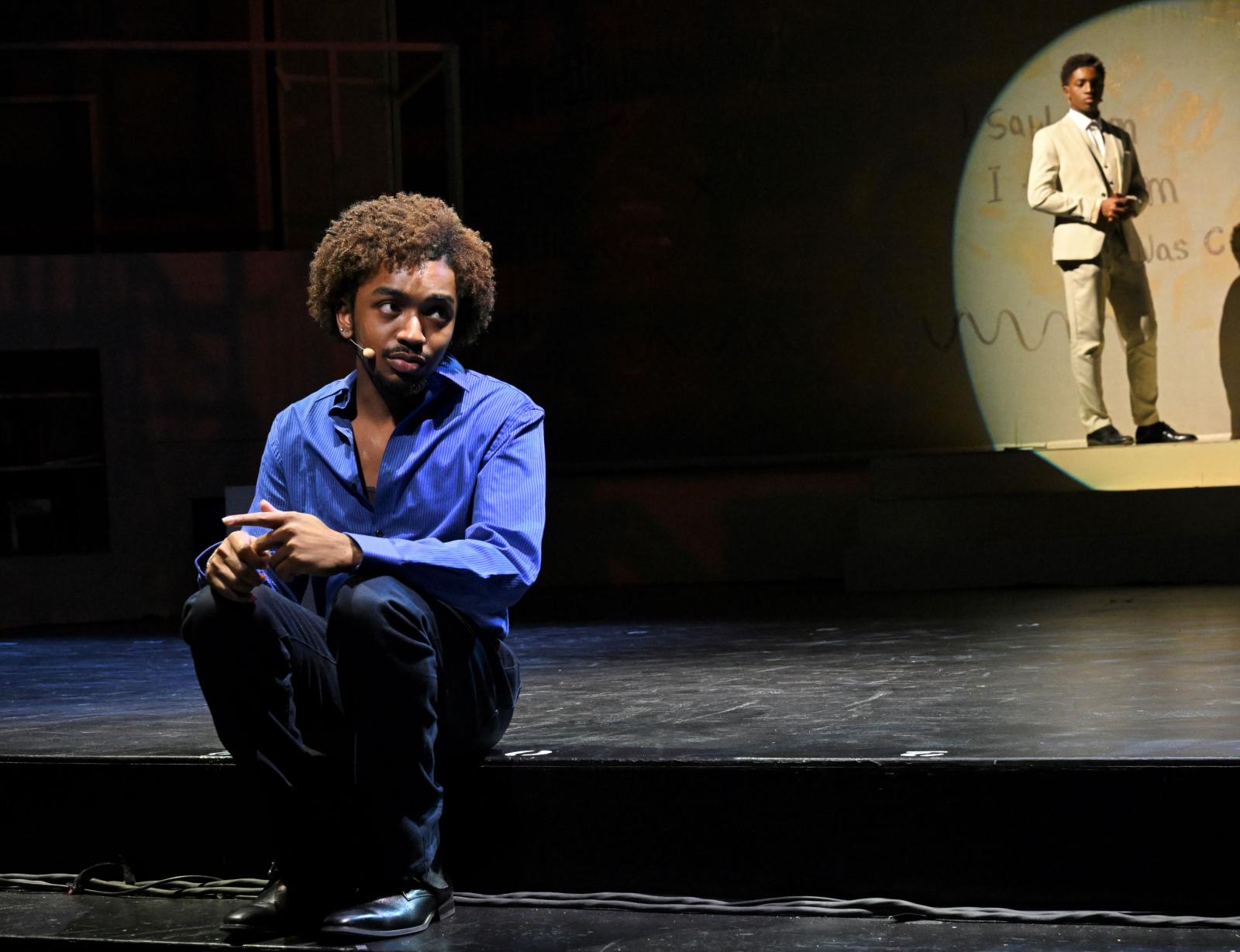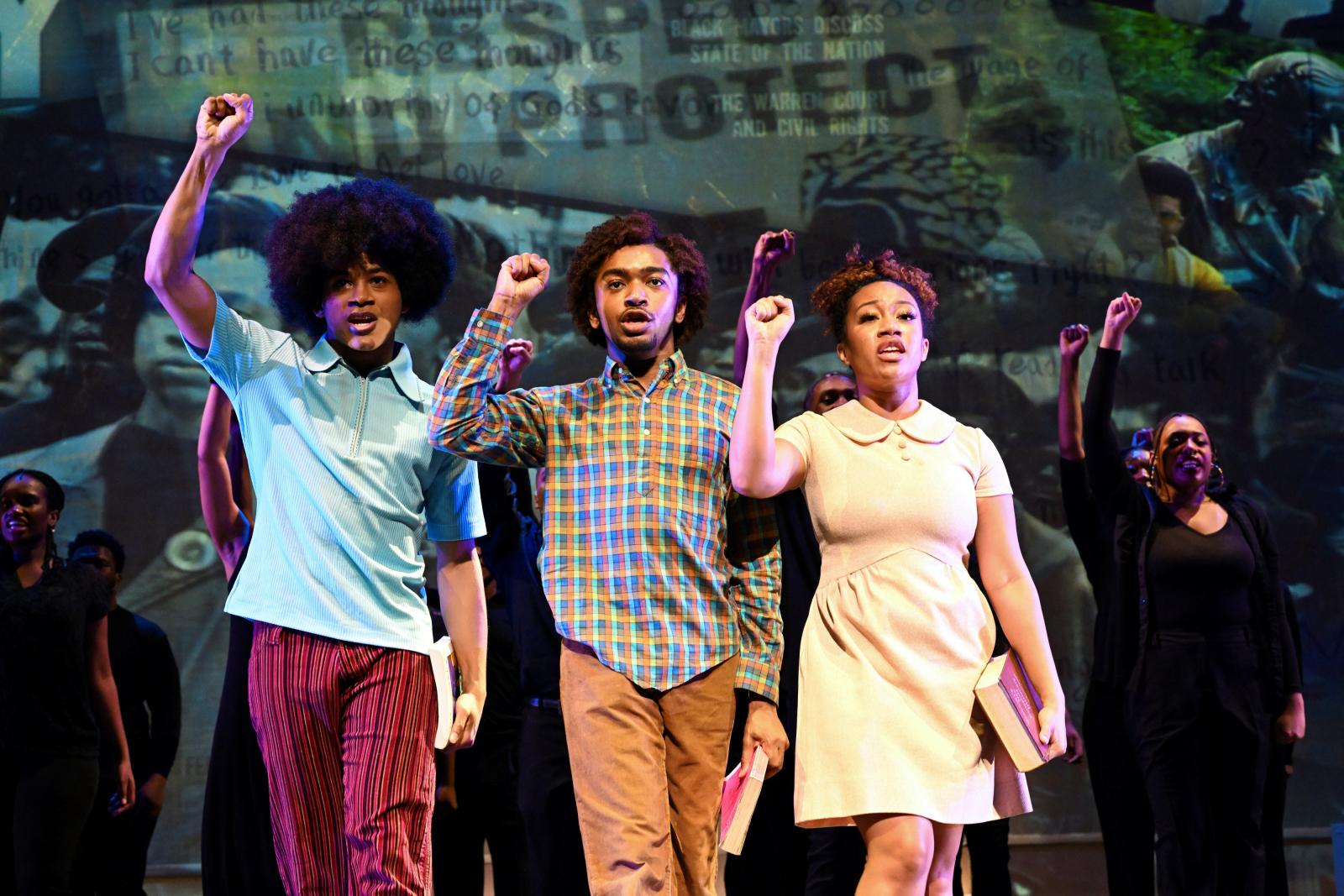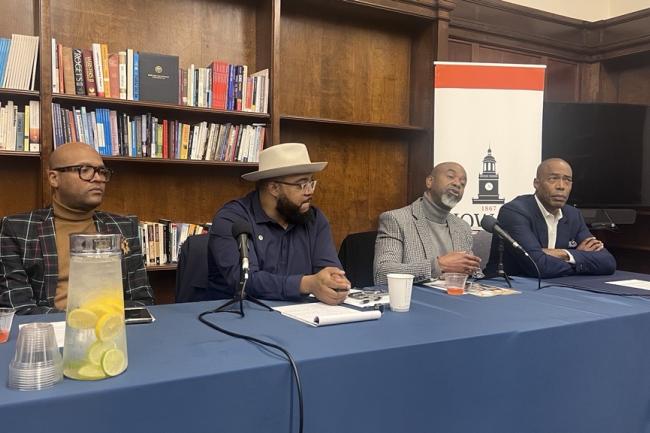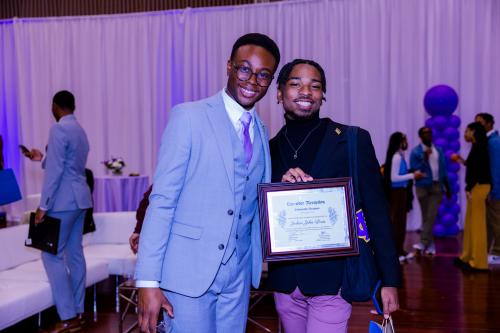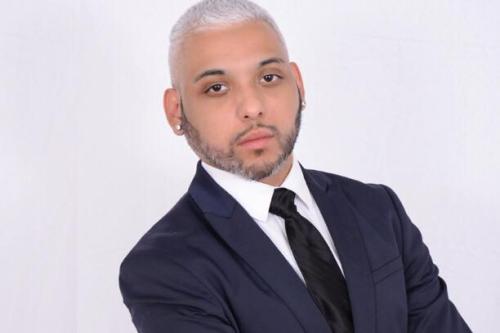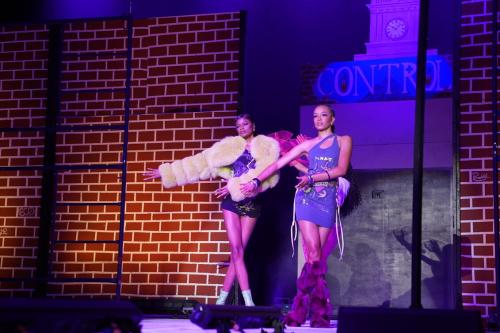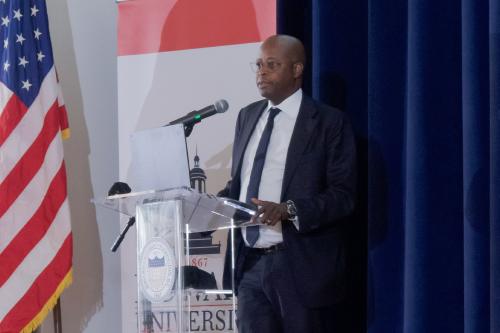Queerness, Community, Accountability
McElroy explained Sonnets & Soul’s inception, which dates back from studying Shakespearian love poems and not seeing the representation and building out a sense of self-advocacy.
“It became this celebration, an interrogation of the Black community of love and music, but it also became about what happens when you don’t fit into that community in that space that supposed to be our safety, our comfort, our everything but I don’t fit there and don’t see myself there,” McElroy explained.
Along with McElroy, Jamil Fletcher (B.S. ’87), A.J. King, Steve Mobley, Ph.D. (B.A. ’05) and Nicole Austin-Hillary (J.D. ’00) represented diverse sectors of legal, higher education, and the arts sphere, the conversation included inclusive points of view from “an interdisciplinary and intergenerational perspective,” said Khalid Y. Long, Ph.D., the associate professor of theater arts and coordinator of the foundations area in the College of Fine Arts.
Before the show, panelists shared their moments of queer life at Howard before queer inclusion was a priority.
“I was staying in Drew Hall, and there was this major scene one evening when a group of guys who were pretty effeminate, were going out to a club, I was on the fifth floor and not out at the time, but when they were coming out to the courtyard, other residents were throwing bottles at them from all floors for a good 20, 30 minutes,” said Fletcher, founder and publisher of the queer, Black SWERV Magazine.
“There was no discussion of that later, no investigation, it was as if it just didn’t happen, and that was in ‘82...I’m really proud of how far Howard has come.”
If we don’t have these open conversations about gender, gender identity, sex and sexuality, you’re literally leading your kids to slaughter,”
In 2022, Howard was named the most inclusive HBCU by CampusIndex.com, citing policies, protocols, and safe zones part of campus measures to uplift the queer community. However, participants of the panel agreed that, though the place of queer Howard community members have changed, there is still more work to do to ensure inclusivity does not ring hollow.
King, the new director of the LGBTQ+ and Intercultural Affairs Center, spoke to the current climate of Howard’s queer inclusion, stating that advocating for students is a mandatory practice for the center, alongside its mission of being a safe space.
"We want to make sure that, with our office, we are curating a space here you all feel seen, advocated for, and celebrated too,” King said. “We can develop programing and initiatives in that office from or perspective, but it needs to come from what the [Howard student body] wants.”
Fostering Inclusion
While McElroy expressed the need to create a queer space for himself, Mobley also stated that not accepting queerness or embracing queer students has dangerous consequences that leave the population more vulnerable if they are in silos and without community nor resources.
“If we don’t have these open conversations about gender, gender identity, sex and sexuality, you’re literally leading your kids to slaughter,” he explained. “Whenever I’m in a room of HBCU presidents or administrators, [I ask] how old are Black queer youth? When do they first get infected with HIV? Around 18 to 21. How old are your students?”
Mobley also pointed to the social infighting between Black communities that are measures by other harmful, anti-Black cultural standards. “Our homophobia, transphobia, any of these intraracial tensions, are direct byproducts of white supremacy,” he said. “Anti-Blackness is quiet a byproduct of white supremacy.” Mobley is the creator of the Queer and Trans Student Identity Development & Affirmations model that details how HBCUs can create campus-wide policies that uplift their queer communities. This research was conducted with Leslie Hall, a Howard doctoral student in his final year.
Anti-intellectualism that drives queerphobic misconceptions was another facet of the conversation.
“I always go back to the literature historically, and in contemporary moments to say ‘Here are folks that have do this, they’ve written about it,’” Long said. “I didn’t create this but I’m just someone who will facilitate as a professor.”
As a cisgender Black woman and LGBTQIA+ ally, Austin-Hillary, the president and CEO of the Congressional Black Caucus reminded those to “demand their seat at the table” and for students to center their queerness. From the legal perspective, Austin-Hillary also said that lawyers must stand on the side of oppressed groups for their freedoms.
“Charles Hamilton Houston, a former dean of our law school...has this quote ‘Lawyers are either a social justice engineer or a parasite to society,” she explained. “This is not a fight for one community or another. This is a collaborative fight. This is a collaborative effort to pull on communities where equity and acceptance are limited.”
Productions of Sonnets & Soul have taken place at Ira Aldridge Theater. Weekday shows have a 7 p.m. curtain and will run until March 1.
